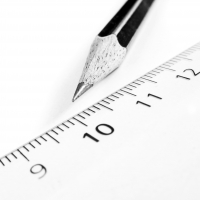The Art of Precise Communication

Tinder, an increasingly popular dating app, restricts users biographies to 500 characters. Tinder is strict about this to ensure that bios are precise and to empower users to socially connect once they make a match without having to view lengthy profiles.
Data is available in abundance today, and the technology around data—the gathering, the intelligence, and the analysis—is growing into leading businesses. Being precise is an art that is very valuable. Not many possess this ability, but the ones who do certainly have an edge over others.
Precision is often confused with being limited in what is told or written. There is a certainly a difference between the two. Precision is being to the point and accurate, whereas someone who is limited in what they communicate is not always precise. Precision has significance not only in communication, but also in more statistical and mathematical forms, where there is a clear difference between being precise and accurate.
In the software world, regardless of how effective we are in our deliverables, much of our success is often attributed to communication. We communicate with various stakeholders about our projects—including executive, strategic, tactical, formal, and informal. While several attributes contribute to effective communication, being precise is one of the most important attributes, and it enhances the chances of success when working within constraints.
While it is not a requirement for us to go back and learn how to communicate precisely, it does not hurt to follow a few simple tips to help us master this art over time—including writing precisely (emails, presentations, documents) and speaking precisely.
While there are several ways you can develop the ability to be precise, here are some that I’ve personally had success with. Try being imprecise, and consider the adverse consequences it has on what you do and how you can improve. Train to think precisely, and precision in communication will automatically follow. Finally, start off by collecting your thoughts. If you are writing a document, jot down all of your thoughts and points, and then set a word limit and trim the content.
Different styles work for different individuals. Pick one, and try it for a given period of time to see the difference. At the end of the day, precision goes a long way in shaping your communication’s success.

